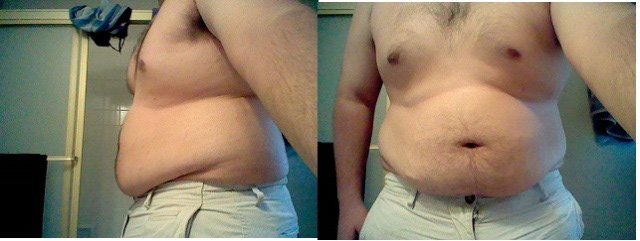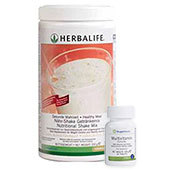Nuitrition and Running
Question
Hi there,
I'm a 24 year old male, approx 5'6'' and approx 133 pounds. I have been running for over a year now (regularly run 10K, Cross-country and half marathons). My times are quite good (sub 38 10K and sub 1:25 half marathon) but I feel like I am not reaching my full potential because I know I don't eat properly. I've been searching the internet for nutrition advice relevant to my circumstances but have been unable to find anything that helps. So I have a couple of specific questions please!...
1. I run approx 30-35 miles per week at the moment although I'm about to increase this hopefully to about 40-45 miles. How many extra calories should I roughly be taking on board to account for this to maintain my current weight and should I be concentrating on carbohydrates? (I know practically nothing about carbs/protein/fats etc apart from the basics!).
2. I'm now at the stage where I'm getting a bit skinny and I want to start adding a little bit of muscle without becoming too heavy. I've heard that running actually undoes any work put in to build muscle...is this true? Also, considering that I will still be running the same distances...should I be changing my diet or amount of calories with a view to gaining muscle too?
Also if you have any general advice that you could throw my way, given my circumstances, I would be most grateful!
Thanks for your time!
Paul
Hi Paul,
First, I would like to apologize for the delay in my response time. With prior obligations to clients, I have been unable to access my computer. Next, I am sure there is some information that could help you.
I have done a little calculating for your specific needs and recommend the following:
Carbohydrates: 402 grams
Proteins: 201 grams
Fats: 30 grams
You should give attention to all of the above listed macro nutrients. Macro nutrients are nutrients that must be taken in in large supplies. Water is also a macro nutrient.
Micro nutrients are nutrients that should be taken in in smaller quantities, such as sodium,potassium and sugars (because your body naturally produces a certain amount of these nutrients).
Running doesn't "undo" muscle building efforts if it is done correctly. Which brings me to an important lesson I teach new personal trainers, to define "correct".
If you metabolise more calories than you ingest you are burning stored calories. This is not necessarily a bad idea if you have the calories stored to burn.
However, if you burn more calories than you take in AND burn more calories than you have stored, you will develop a condition I call reactive ketonic metabolism. This is where you are metabolizing nutients required to sustain other systemic functions (such as muscles, bones, etc).
In balancing a diet with a fitness program, it is important to understand the concept of a basal metabolic rate. This is the rate at which your body metabolises the nutrients taken in and ultimately defines your DCIR (Daily Calorie Intake Requirement). This is getting more into Specialized Nutrition and Clinical Calculations but I will explain it. There are 24 hours in one day and your body weight is composed of calories that make up this weight.
So, in order to maintain your body weight you have to take in AND burn the same amount of calories every day. To find the number of calories you require each day, as a minimum, multiply your body weight (in pounds) times 24 (hours in a day). Then divide by 2.2 (the universal/metric conversion from KG to LBS). This is the bare minimum number of calories you need to maintain your current body weight. Your metabolic rate changes based on your activity level. Some instructors also refer to this as a Basal Metabolic Rate (BMR), but to avoid the confusion of distinguishing the two, I call it the Dynamic Metabolic Rate (DMR).
So, if you weigh 133 what is your current BMR?
133 x 24 /2.2 = 1450. That means you must take in 1,450 calories in a 24 hour period to maintain your current body weight, given that you have a sedentary (or literally non existent activity level). To speculate a little, or micro calculate, divide 1450 by 24 to find out how many calories you must take in per hour. 1450/24 = 60.416 (to simplify lets say 61). Now, to get detail specific, that is just over 1 calorie per minute. So at the bare minimum on a completely non active level, you must take in one calorie for each minute of the day. That is your BMR per minute. So lets look into your DMR. The theory of BMR is a "give and take" concept. Your BMR is based on the number of calories you take in and so over a period of time, your body adjusts to that. How does it adjust? It depends on the other half of the fitness program.....your activity level. Your dynamic metabolic rate, or DMR, is the rate at
which your body metabolises calories while active, proportional to the amount of activity you are doing. The unerlying theory here is that by doubling our metabolism rate, we will be doubling the amount of mitochondria exchange, thus requiring a double of our resting heart rate. So if my resting heart rate is 60 doubling it would put it at 120, which we know isn't the best in the world for our hearts. As such, an increase in our heart rate is typically correlated with a change in blood pressure. My blood pressure is on average 120/80, so doubling both systolic and diastolic would be what? 240/160. That is of course if the heart could sustain such a pressure. But it can not. Therefore with stress, it would of course fibrillate. With that, we work on the maximum allowable
amount of stress that our hearts could handle. With my heart rate being on average 120/80 my pulse pressure is 40 (the difference between the systolic and diastolic readings is the pulse pressure), so in theory my pulse pressure would have to double, im my metabolism rate were to double, which would make my pulse pressure 80. Correct?
Instead of taking the chance of causing serious physical conditions ranging from hypoxia to fibrillation, some very smart guys came up with the ideas of reducing the maximum stress level to under twice the BMR. Therefore, they reduced it to 80% of your BMR.
So, instead of burning 1 calorie per minute, when you are EXTREMELY active, we work on the premise that you burn 1.8 (because burning 2 calories per minute means you are doubling your metabolim rate and by doing this we are working off twice our body weight. This means instead of maintaining our body weights for 24 hours we would only maintain our body weight for 12 hours before we started to develop a state of Reactive Ketonic Metabolism) As with anything, I am sure there are exceptions to this rule, normally in those with a thyroid condition or unusually high metabolism. This would probably be a chronic problem for someone with a thyroid goiter or Grave's Disease.
That is the history of the Dynamic Metabolic Rate. So, now we get into measuring your Dynamic Metabolic Rate. If you have a mild activity level, you burn approximately 40% more
calories than you would if you did nothing. So your DMR is your BMR x 1.4. If you are somewhat active, you would metabolise approximately 60% more, so your DMR is what?
BMR x 1.6. Then you have the example listed above. Rigorous activity is a max of 80 percent more than your BMR. So to find it, you multiply your BMR x 1.8. That means for an average individual with an "average metabolism", instead of burning 1 calorie per minute, you are burning 1.8.
Let's apply that to how it can help you in the future. If you increase your activity level does your metabolic rate change? Yes absolutely. Does that mean that your metabolic rate requires you to take in more calories? Yes absolutely. However, we have learned that your metabolic rate on any given day will not typically reach 2 calories per minute beacause if it did you would only maintain your body weight for half a day and then your body would start "eating" itself to compensate for the nutrients it requires. So, if you increase your activity level to beyond that of an extremely active person, I would recommend that you calculate your DMR as 1.85 to 1.9 Max.
How does that affect you? It means that you will be gaining weight based on muscle mass. If your DMR is 1.9 and your daily caloric intake is .9 times higher than your BMR then you will be adding how much weight? 90% of 133 + 133. So you are looking at or around 252 lbs of muscle (depending on your level of activity). Please note: in terms of metabolic rate I not only refer to the frequency of activity but the intensity and duration. So, it could last two hours at a 90MHR and this would be accurate. However, if it is only 1 Hour at 70 MHR, this would be incorrect.
Now lets get on to conversions. We have a sound level of comprehension on the metabolic rates, how the affect us and how we determine which is appropriate for us. So we have to determine how that affects our diets. After all, whats the use in knowing how many calories to take in if
we dont know how to calculate calories in terms of intake.
1 lbs is equivelant to 3500 calories. So if you weight 133 lbs, that is equivelant to how many calories? 465,500. That's alot. But we are not composed of calories alone, there is tissue and cartledge and bones. However, on general if you want to lose one pound a week, reduce your caloric intake by 3500 calories. Regularly consuming less that 1500 calories per day will reduce your BMR.
Converting calories to grams is important in understanding how to read nutritional values on food items you purchase.
The macronutrients are essential in converting. There are 4 calories in one gram of Carbohydrates. There are 4 calories in one gram of protein. There are 9 calories in one gram of fat. Your diet should be composed of the following:
Carbohydrates: 60% of your Daily Caloric Intake Requirement (DCIR) should be carbohydrate calories.
Protein: 30% of your DCIR should be protein calories.
Fat: 10% of your DCIR should be fat calories.
Converting this to grams is more methodical than difficult.
In order to convert to grams however, you need your BMR.
If for example your DMR is 2612 (which it is), you would calculate the distribution of those calories with the information above.
60% of 2612 (DMR) must be carbohydrates
30% of 2612 must be protein
10% of 2612 must be fat
the next step is to convert calories to grams.
carbohydrates are 4 calories per gram.
2612 x .60 / 4 = 391 grams of carbohydrates
protein is 4 calories per gram.
2612 x .30/4 = 195.5 (or 196 grams simplified)
regarding the calculation of proteins, the simplest way
is to find the g/carbs and then divide by 2.
finally fats are 9 calories per gram.
2612 x .10 /9
261/9= 29 grams of fat.
So we have calculated your DCIR, your BMR and your DMR.
Now I will work you through the concept of Heart Rate assessments.
The maximum heart rate is the rate of your heart beat that denotes the maximum allowable amount of stress on it. It is simply put the pace of your heart that should never at any given time be exceeded. We use the MHR to determine intensity level, heart rate reserve and target heart rate.
The Intensity Level Desired, or ILD is the percentage of your MHR that you wish to sustain during activity. That is to say it is the amount of stress you would like to place on your heart. It is determined based on your level of
fitness. Your level of fitness is not speed in running,
weight max in circut or power in aerobics, but how much stress is placed on your heart at the time of the exercise.
The stronger the heart, the more blood flow, the more oxygenation, the more mitochondria exchange in the muscles, the more force exerted by fast and slow twitch muscles the more muscle mass gained (simplified explaination). There are 3 levels of fitness: basic, intermediate and advanced. The basic level is for those just starting a regimen.The MHR % will vary from instructor to instructor but as a general rule, I start my clients out as if they were completely out of shape. I start them out at 50%. This is my way of ensuring that they are prepred for the ILD and I dont just throw them in a workout plan that they are completely unprepared to handle physically. The following is how I classify fitness Levels:
BASIC: 50-60% of MHR
INTERMEDIATE: 60 - 80% of MHR
ADVANCED: 80-90% of HMR
To use these calculations, multiply them by your MHR to determine your Target Heart Rate, which I will discuss next.
The Target Heart Rate, or THR, is the heart rate you wish to sustain during activity. It is obtained by multiplying the MHR by the Intensity Level Desired (ILD). The formula is as follows:
(MHR) x (ILD) = THR
So, with your age being 24 your MHR is 196.
Find your Intensity Level Desired, per say......75%
Use the formula:
MHR (196) x ILD (.75) = 147
There is another method of finding your THR. Using what is known as a Heart Rate Reserve, or HRR. The heart rate reserve uses the resting heart rate, or the hearts rate when not in significant activity. It is far more accurate. To use this method, the following formula is provided:
{HRR x ILD} + RHR
Step 1.
HRR = MHR - RHR
HRR = 196 - Rest. Heart Rate (say 50).
HRR = 196-50
HRR = 146
Step 2.
HRR x ILD
196 x .75
109.5 ---->110
Step 3.
+ RHR (50)
110 + 50 = 160
this would be your THR measured by the Karvonen Method.
Your THR would be 159.5. But how do you count a half a heart beat or even a portion of a heart beat? so anything over .5 I round up) to the next whole beat. That would put your THR at 160.
So far I have covered Maximum Heart Rate, Resting Heart Rate, Heart Rate Reserve, Target Heart Rate, Basal Metabolic Rate, Dynamic Metabolic Rate, Intensity Level Desired, Daily Caloric Intake Requirement, Nutritional Dietary Calculations and Caloric Conversions.
I hope this information gives you a little more information on the processes required to evaluate a good
fitness program and how to balance it. I hope this information has answered your questions. You are invited to rate the usefulness and satisfaction of the information I have provided. Should you need any further information, you are welcome to reply or respond with questions.
Thank you again for choosing all experts and your patience.
Good Luck.
Sincerely,
Zachory Lee Cook
CPT,CFI,CSN,CSFI
International Fitness Association
Certified Instructor Number: 209967
Exp: 05/09
- Prev:Running and Nutrition
- Next:wheat allergy
Related Articles
-
2kinds of cheese
QuestionHI:What are the chloresterol,fat,+calorie levels on pot(f
-
too WIDE
QuestionI have recently have started going to the gym and while d
-
DID YOU HEAR THAT?
QuestionI was wondering would you please tell me: why does
-
Good meal to eat before a sport
QuestionWhats a good meal to eat before you play a game? (e.g. ba
-
Let your body control your weight! Meal timing.
Questionhi. i am 16 years old, 57, and weigh probably around 135-
-
Crash Dieting
QuestionCould you please tell me the dangers of crash dieting? Ho




